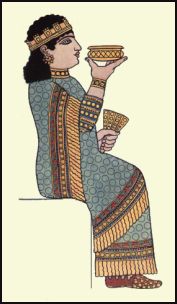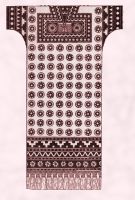


Notice: This is the official website of the All Empires History Community (Reg. 10 Feb 2002)
History of Clothing |
Post Reply 
|
| Author | |
Don Quixote 
Tsar 
Retired AE Moderator Joined: 29-Dec-2010 Online Status: Offline Posts: 4734 |
 Quote Quote  Reply Reply
 Topic: History of Clothing Topic: History of ClothingPosted: 26-Mar-2012 at 01:47 |
|
I used to make doll's clothes that represent clothing in different ancient cultures, so along this I did quite a bot of research on history of clothing. So, I thought it would be a good idea to make a thread about it, it's an area that is a picturesque one to write about.
I'll start with Sumeria. The sumerians made their clothes from flax and wool, and used them according to weather. "...Men were barechested and wore skirt-like garments that tied at the waist. Women usually wore gowns that covered them from their shoulders to their ankles. The right arm and shoulder were left uncovered. Men were either clean shaven or had long hair and beards. Women wore their hair long, but they usually braided it and wrapped it around their heads. When entertaining guests, women would place headdresses in their hair.
http://ablemedia.com/ctcweb/showcase/dlottmesopotamia4.html Jewelry was worn by man and women alike.
The male clothing is well seen on this sculpture
Female dress and male clothing
Here a more refined account, date-conscious too: "...The Sumerian civilization was established
before 4000 BC and reached a high level of culture between 2700 and 2350 BC. In
early times both sexes wore
sheepskin skirts with the skin turned inside and the wool combed into
decorative
tufts. These wraparound skirts were pinned in place and extended from the
waist to the knees or, for more important persons, to the ankles. The upper part
of the torso was bare or clothed by another sheepskin cloaking the shoulders.
From about 2500 BC a woven woolen fabric replaced the sheepskin, but the tufted
effect was retained, either by sewing tufts onto the garment or by weaving loops
into the fabric. Named kaunakes by the Greeks, this tufted fabric is
shown in all the sculptures and mosaics of the period, as, for example, in the
art from the excavations at Ur exhibited in the British Museum in London. At
this time, also, long cloaks were worn, and materials for garments and head
coverings included felted wool and leather. Men were generally clean-shaven.
Both sexes seem to have often worn large wigs, as in ancient Egypt. Metalworking
was of a high standard, as may be seen in the elaborate golden jewelry, which
was encrusted with semiprecious stones and worn by both sexes: brooches,
earrings, hair ornaments, and neck chains....."http://history-world.org/sumeria,%20dress.htm Male clothing, that shows the "tuffs" the article talks about.
Edited by Don Quixote - 26-Mar-2012 at 01:53 |
|
 |
|
Don Quixote 
Tsar 
Retired AE Moderator Joined: 29-Dec-2010 Online Status: Offline Posts: 4734 |
 Quote Quote  Reply Reply
 Posted: 03-Apr-2012 at 02:06 Posted: 03-Apr-2012 at 02:06 |
|
Ancient Assyrian and Babylonian clothing:
- around 2500 BC: "... These two styles were worn alone, or in combination and changes were introduced by varying the proportions of the tunic or shawl. The simple shawl shown right, was dependant on how the wearer wrapped it and the drapery is circa 2500 B.C. after the figure of King Gudea at the British Museum. Many of the styles illustrated here are suitable for costumes to wear in religious plays and pageants. This first shawl pattern uses a length of fabric to create Assyrian Style A of King Gudea below right. The measurements are 56" by 118".
- around 1000 BC: "...  The main Assyrian clothing was candy – tunic with whole-cut sleeves reaching the elbows or being even longer. The main Assyrian clothing was candy – tunic with whole-cut sleeves reaching the elbows or being even longer.  The
length of the tunic reached the knees, and a wide belt was tied up on
the hips. The quality of cloth, decorations, the length and the
quantity of dresses wearing at the same time were specified by the
estate. Only the king had the right to wear more than one dress. His
long candy was made of thin, white wool richly decorated with embroidery
of geometrical sornaments, gold chased plates and thick fringe on the
edge. The king wore a long coat over the tunic without pleats, decorated
with fringe and embroidery. The
length of the tunic reached the knees, and a wide belt was tied up on
the hips. The quality of cloth, decorations, the length and the
quantity of dresses wearing at the same time were specified by the
estate. Only the king had the right to wear more than one dress. His
long candy was made of thin, white wool richly decorated with embroidery
of geometrical sornaments, gold chased plates and thick fringe on the
edge. The king wore a long coat over the tunic without pleats, decorated
with fringe and embroidery.The commonly used colour of coat was purple. Besides their decorative purpose, gold plates had a symbolic meaning, expressing the sun, the moon and stars. The most favorite type of decoration was fringe which was either sewn at the bottom of the dress or was worn as a separate decoration. The crossed fringe on the chest was the typical feature in the officer’s clothes. The clothing of king and elite was made of thin and expensive wool fabric.  The
production of cloth, decorated with coloured needlework, reached the
highest skill and was the main product for foreign trade. The
production of cloth, decorated with coloured needlework, reached the
highest skill and was the main product for foreign trade. Typical Assyrian Dye Colours included purple of different shades (red, violet, blue, paler blue) and yellow (orange, brown). The secret of fabrics colouring was being kept in Assyria for a long time. There were almost no female images in culture due to deprivation of women’s rights in the society. We can see the clothing of empress and slaves on the bas-relief pictured the king Ashurbanipal with his wife in the garden. Both of them wore similar dresses...." "...Design decisions of Assyrian clothing included principles of primitive cut which lay in the base of all types of eastern clothing of later period. It was a combination of laid on and draped clothing of two types: long and short dresses consisted of one or two parts. In the first case, all the body was wrapped with a rectangular cloth, the neck was wrapped with the upper part of fringed dress placing the cut in the middle and a wide belt was put above the dress. In the second case the body, from the knee to the waist, was wrapped with the lower part of the dress, the upper part of the dress a rectangular piece of cloth with figured contours and with a space for the neck. The waist was tied with a belt. Both upper part and lower part were decorated with the fringe. FOOT-WEAR, HEADGEARS, ORNAMENTS, HAIRSTYLE
"...MATERIAL OF CLOTHING The most common material for clothing was wool, although linen had been known from an early period and was often used for better-quality garments. Cotton did not become available until Sennacherib introduced it into Assyria in about 700 BC, from which time it was used for the making of cloth. Other materials sometimes used were leather and papyrus. The skins and furs of animals and metal were also in use, but chiefly for military and hunting costume. DATES The earliest type of costume here is a rather elaborate shawl drapery worn without any tunic underneath. Later comes the tunic with various-fringed shawl draperies worn in addition, and some of the latest types have the tunic worn alone without the shawl draperies. The dates given for the costumes illustrated in this style have been verified at the British Museum. It should be remembered, as in the case of ancient Egyptians costume, that the dresses changed very slowly indeed, and most styles of this era were worn literally for hundreds of years. THE DIFFERENCE IN MEN AND WOMEN CLOTHING The representations of costume which Assyrian art has left us are almost entirely those of men’s dress. Two examples of women’s dresses are shown here. The first wears a plain ungirded tunic and a simply draped shawl covering the figure partially. The second is a dress of a Queen, and has the tunic almost entirely covered with a voluminous shawl. The wide belt with narrow belt over it seems to be confined to the men’s costume, as also the tighter and scantier shawl draperies, which exist in singular variety. COLORING IN CLOTHING Though we do not possess the actual specimens of these costumes, still we can infer from the lavish ornament and, from references in the Old Testament writings that rich coloring prevailed. The dyes were probably similar to those of ancient Egypt, and this table will suggest the particular hue of each color:
All these colors could be used as embroideries on a white or natural colored ground of linen, the embroideries being of wool. In other cases the whole garment might be colored throughout...." http://www.nineveh.com/Clothing%20in%20Ancient%20Assyria.html Assyrian female costume:
Male Assyrian costume - the tunic and the shawl the quotes mention are well seen:
Assyrian tunic: |
|
 |
|
Nick1986 
Emperor 

Mighty Slayer of Trolls Joined: 22-Mar-2011 Location: England Online Status: Offline Posts: 7940 |
 Quote Quote  Reply Reply
 Posted: 03-Apr-2012 at 19:08 Posted: 03-Apr-2012 at 19:08 |
|
Can we see some of the clothes you made Don?
|
|
|
Me Grimlock not nice Dino! Me bash brains!
|
|
 |
|
Post Reply 
|
| Forum Jump | Forum Permissions  You cannot post new topics in this forum You cannot reply to topics in this forum You cannot delete your posts in this forum You cannot edit your posts in this forum You cannot create polls in this forum You cannot vote in polls in this forum |
Copyright ©2001-2009 Web Wiz
This page was generated in 0.098 seconds.











 Printable Version
Printable Version Google
Google Delicious
Delicious Digg
Digg StumbleUpon
StumbleUpon Windows Live
Windows Live Yahoo Bookmarks
Yahoo Bookmarks reddit
reddit Facebook
Facebook MySpace
MySpace Newsvine
Newsvine Furl
Furl Topic Options
Topic Options Although both rich and poor Sumerians
wore the same style of clothing, the wealthier Sumerians wore
clothing that was made out of expensive and luxurious materials.
Wealthy women and princesses also wore clothing that was colorful
and bright...."
Although both rich and poor Sumerians
wore the same style of clothing, the wealthier Sumerians wore
clothing that was made out of expensive and luxurious materials.
Wealthy women and princesses also wore clothing that was colorful
and bright...."
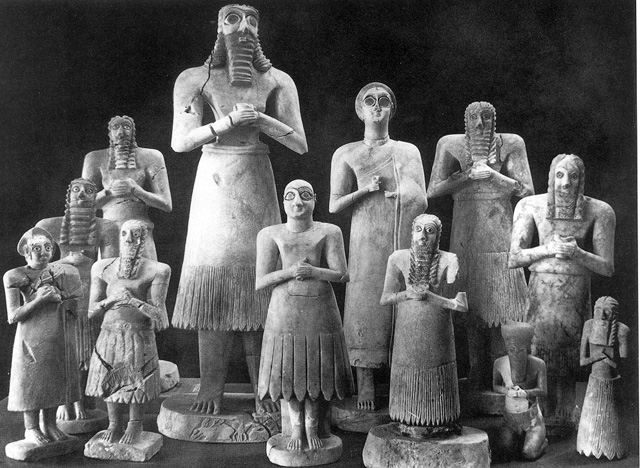
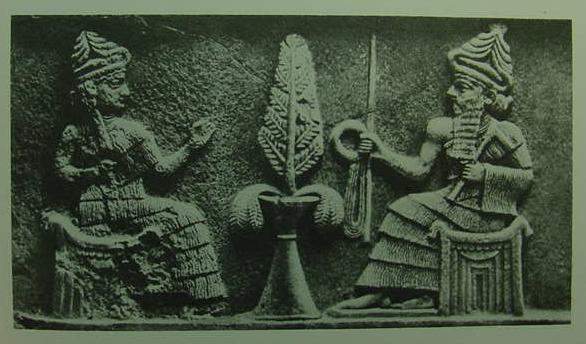
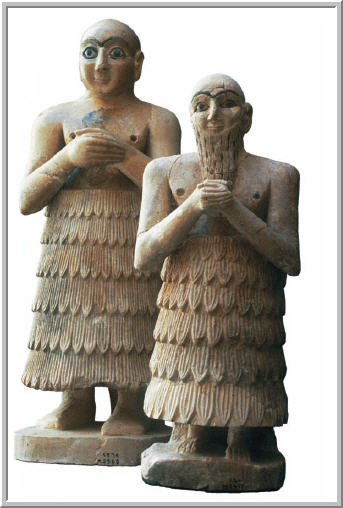
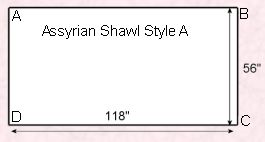 Now throw edge B to A upwards across the chest and
over the left shoulder so that corner A hangs down the back.
Now throw edge B to A upwards across the chest and
over the left shoulder so that corner A hangs down the back.
 They
were made of thick felt. The king wore a white felt tiara, decorated
with metal plates. The gold forehead band with enamel, jewels, fringe at
the bottom was tied up over the tiara.
They
were made of thick felt. The king wore a white felt tiara, decorated
with metal plates. The gold forehead band with enamel, jewels, fringe at
the bottom was tied up over the tiara.